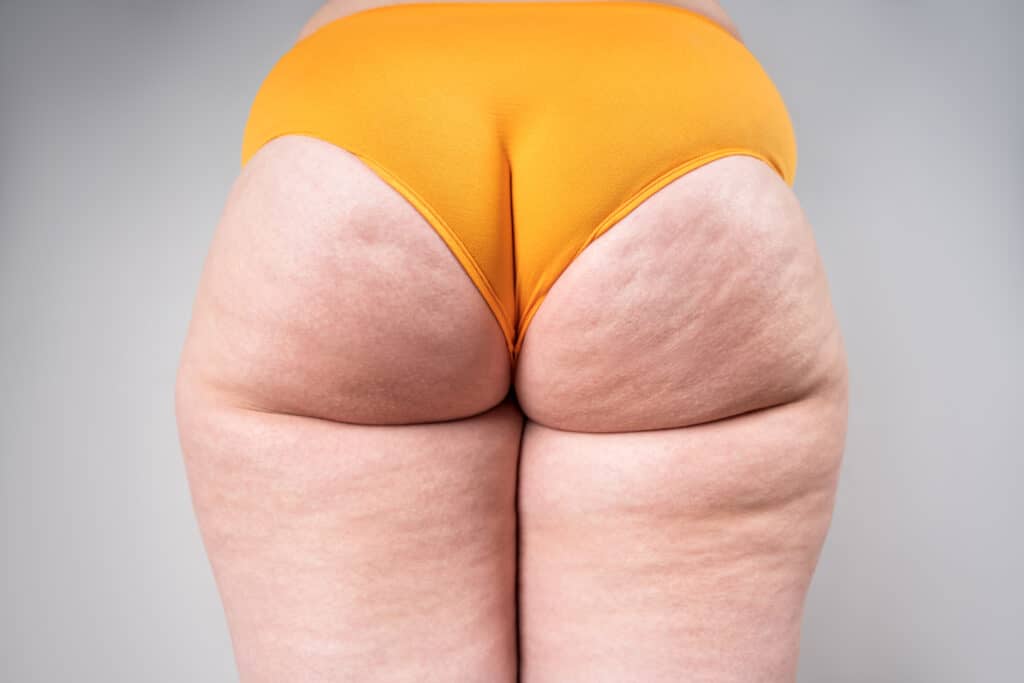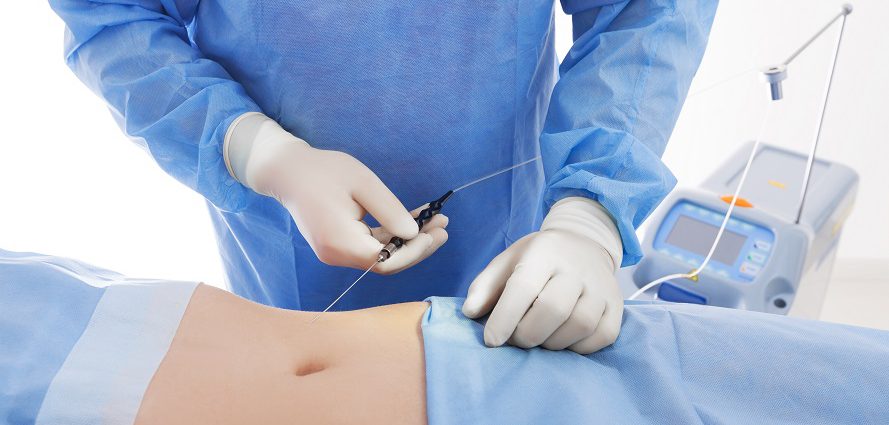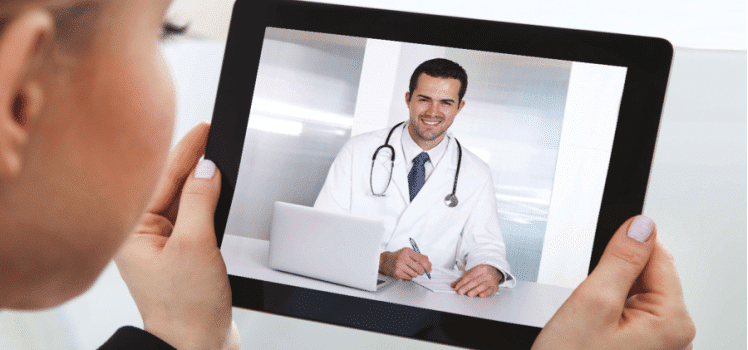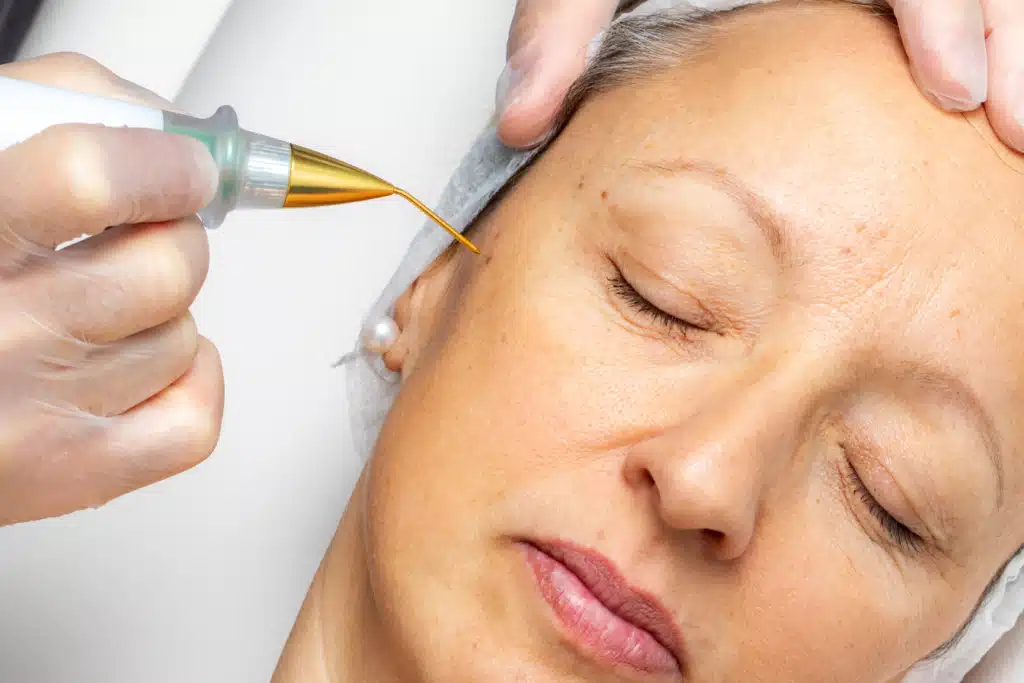Did you know that over 90% of women experience cellulite, often characterized by uneven skin texture in fatty areas like the inner thighs, at some point in their lives? Cellulite can be a frustrating issue, especially when combined with weight fluctuations. These changes in weight can make the appearance of cellulite more pronounced. Many people struggle to manage both their weight and the dimpled skin caused by this condition.
Understanding the link between cellulite and weight fluctuations is crucial for effective management. This post will explore how these factors, including mild cellulite and genetic cellulite, interplay and what you can do to minimize their impact with cellulite reduction treatment and understanding cellulite changes. We’ll share tips to help you feel more confident in your skin while tackling those pesky bumps head-on.
Key Takeaways
- Understand that cellulite is affected by various factors, including genetics, hormones, and lifestyle choices, not just weight fluctuations.
- Recognize that weight changes can temporarily worsen the appearance of cellulite; maintaining a stable weight may help improve skin texture.
- Focus on a balanced diet rich in fruits, vegetables, and lean proteins to support skin health and minimize cellulite visibility.
- Incorporate regular exercise into your routine, as strength training and cardio can help tone muscles and reduce the appearance of cellulite.
- Consider professional treatments like laser therapy or massage if lifestyle changes are not enough to manage your cellulite concerns.
- Always consult with a healthcare provider if you notice significant changes in your skin or body that cause concern.
Understanding Cellulite and Its Causes
Definition
Cellulite is a common skin condition. It appears as dimpled or lumpy skin, often on the thighs, hips, and abdomen. Many people notice it after weight fluctuations. This condition affects both men and women but is more common in women due to differences in fat distribution and cellulite severity.
Hormonal Factors
Hormones play a significant role in cellulite development. Estrogen, in particular, affects how fat is stored in the body and cellulite severity. Higher estrogen levels can lead to increased fat storage and changes in blood flow. These changes may cause the connective tissue to weaken, making cellulite more visible. Other hormones like insulin and adrenaline also influence fat storage.
Connective Tissue and Fat Cells
Connective tissue and fat cells have a direct impact on the appearance of cellulite. The skin has a layer of connective tissue that helps keep everything in place. When this connective tissue loses elasticity, it allows fat cells to push through the skin’s surface. This creates the dimpled look associated with cellulite.
Fat cells expand when weight fluctuates, which can worsen the appearance of cellulite. As these fat cells grow larger, they push against the weakened connective tissue. This pressure results in the characteristic lumps and dimples.
Genetics also plays a role in how likely someone is to develop cellulite. Some people are genetically predisposed to have weaker connective tissue or different fat distribution patterns.
Age is another factor. As people get older, their skin loses collagen and elasticity. This change can make cellulite more noticeable over time.
Maintaining a healthy weight can help manage the appearance of cellulite. However, it’s important to note that even slim individuals can have cellulite.
Lifestyle Factors
Lifestyle choices can influence the severity of cellulite. Diet plays a big part. High-fat diets or those rich in processed foods may increase body fat, worsening the condition.
Hydration is crucial too. Drinking enough water keeps skin healthy and may reduce the appearance of cellulite. Regular exercise helps tone muscles and improve circulation, which can also be beneficial.
Stress management is essential as well. High-stress levels can trigger hormonal changes that contribute to fat storage.
In summary, understanding these factors provides insight into managing and reducing the appearance of cellulite effectively.
The Link Between Weight Changes and Cellulite
Weight Gain
Rapid weight gain can worsen the appearance of cellulite. This occurs because excess fat pushes against the skin. As a result, the skin stretches and becomes less firm. The connective tissues under the skin also become tighter, creating a dimpled effect. Studies show that women with higher body fat percentages often have more visible cellulite.
When weight increases quickly, the body may not adapt well. Skin elasticity can diminish, making it harder for the skin to bounce back. This can lead to deeper indentations in areas prone to cellulite, such as thighs and buttocks.
Weight Loss
Significant weight loss can help reduce the visibility of cellulite. Losing weight decreases fat deposits beneath the skin. This can smooth out the surface and make dimples less noticeable. Research indicates that individuals who lose a substantial amount of weight often report improvements in their skin texture.
However, rapid weight loss may not always yield positive results. If weight is lost too quickly, skin may sag. Loose skin can accentuate the appearance of cellulite instead of diminishing it. A gradual approach to weight loss helps maintain skin elasticity.
Stable Weight
Maintaining a stable weight is crucial for managing cellulite effectively. Fluctuating weights can lead to an endless cycle of gaining and losing fat. Each time weight is gained, the skin stretches again. When lost, it may not return to its original firmness.
A consistent weight allows the skin to adjust over time. It helps keep connective tissues strong and elastic. Regular exercise and a balanced diet support this stability. These lifestyle choices promote healthy body composition and improve overall skin health.
Anatomy of Cellulite
Structure of Fat
Subcutaneous fat lies just beneath the skin. This layer is crucial in cellulite development. It consists of fat cells that can expand or shrink based on weight changes. When weight fluctuates, these fat cells can become more prominent. This change can lead to unsightly cellulite.
The structure of this fat layer affects how cellulite forms. Fat cells push against the skin’s surface. When they expand, they create a bumpy appearance. This results in what many refer to as “orange peel” skin.
Connective Tissue
Fibrous connective cords connect the skin to underlying muscles. These cords pull down on the skin. They create dimples and hollows, contributing to cellulite formation. As fat cells grow larger, they can push against these cords. This pressure can cause the skin to dimple more.
These cords are less flexible than the surrounding tissue. Over time, this rigidity increases the visibility of cellulite. The tension from these cords leads to frustration for those dealing with stubborn cellulite.
Gender Differences
Male and female skin structures differ significantly. Men typically have thicker skin and a different arrangement of connective tissue. This structure helps prevent cellulite from forming as easily in men.
Women have a higher percentage of subcutaneous fat compared to men. Their fibrous connective cords are arranged vertically, which allows fat cells to push through more easily. This anatomical difference explains why cellulite exists more commonly in women than in men.
Genetic Factors
Genetics also play a role in how cellulite develops. Some people are more predisposed to genetic cellulite due to family history. Hormonal changes throughout life can also affect cellulite production. Pregnancy, puberty, and menopause can all increase the risk of developing cellulite.
Treatment Options
Various treatments aim at reducing or removing cellulite. These include topical creams, laser therapy, and liposuction. While some treatments show promise, results vary widely among individuals.
Lifestyle changes can also help manage cellulite concerns. Regular exercise and a balanced diet may reduce the appearance of additional cellulite over time.
Common Symptoms and Risk Factors
Visible Symptoms
Cellulite often causes skin dimpling. This appears as small indentations on the skin’s surface. The skin may also feel uneven or have a lumpy texture. Many people notice these changes on their thighs, hips, and buttocks.
The condition can lead to a feeling of self-consciousness. Some individuals may feel embarrassed about the appearance of their skin. It is important to remember that cellulite is a harmless skin condition. However, its visibility can affect confidence levels.
Genetic Factors
Genetics play a significant role in the development of cellulite. If family members have it, there is a higher chance someone will also develop it. Studies show that women are more likely to experience cellulite than men due to genetic predispositions.
Hormonal changes also impact cellulite formation. Fluctuations in hormones such as estrogen can affect how fat is stored in the body. As women age, these hormonal changes become more pronounced, increasing the likelihood of developing cellulite.
Lifestyle Choices
Lifestyle choices can exacerbate the presence of cellulite. Poor circulation is one major factor that contributes to its development. Inadequate blood flow can lead to an accumulation of fat beneath the skin.
Smoking is another risk factor linked to cellulite. It damages blood vessels and reduces circulation, making the skin less elastic. This can worsen the appearance of dimpling over time.
Sedentary behavior also contributes to this condition. Lack of regular physical activity can lead to weight fluctuations. These fluctuations can increase fat deposits in certain areas, making cellulite more visible.
Maintaining a healthy weight helps reduce the appearance of cellulite. Regular exercise improves circulation and strengthens muscles, which may help smooth out the skin’s surface.
Hormonal Changes
Hormonal changes during puberty, pregnancy, or menopause can trigger the onset of cellulite. These changes affect fat distribution and skin elasticity. Women often notice increased cellulite during these times.
The effects of hormonal fluctuations can be significant. They contribute to the way fat cells expand and how connective tissue behaves under the skin.
Effective Management and Treatment Options
Non-Invasive Treatments
Many people seek non-invasive treatments for cellulite. Creams often promise smoother skin. These products usually contain caffeine or retinol. They may temporarily reduce the appearance of cellulite. Massages also provide a quick fix. They can improve circulation and smooth the skin’s surface. However, these effects are not permanent. Regular use is necessary for ongoing benefits.
Medical Procedures
Medical procedures offer more lasting results. Laser therapy is one popular option. It targets fat cells under the skin. This method helps to tighten the skin and reduce dimpling. Acoustic wave therapy is another effective treatment. It uses sound waves to break up fat cells and improve skin texture. Both therapies require multiple sessions for best results. Patients should expect gradual improvement over time.
Limitations and Expectations
Each treatment has its own limitations. Non-invasive options may only provide temporary relief. Results can vary from person to person. Some people might see significant changes, while others notice little difference. Medical procedures tend to be more effective but come with risks. Side effects like swelling or bruising can occur after laser or acoustic wave therapy.
Understanding these limitations is crucial before starting any treatment. Setting realistic expectations helps in managing outcomes. A combination of treatments might work best for some individuals. Consulting with a dermatologist can guide choices based on personal needs.
Lifestyle Changes to Prevent Cellulite
Physical Activity
Regular physical activity plays a crucial role in cellulite reduction. Engaging in exercises such as running, swimming, or cycling helps improve skin elasticity and tone. These activities enhance blood circulation and promote lymphatic drainage.
Strength training also benefits the appearance of skin. Building muscle can help smooth out the skin’s surface. Aim for at least 150 minutes of moderate aerobic exercise weekly. Incorporate strength training at least two days a week.
Clothing Choices
Avoiding tight clothing is essential for maintaining healthy circulation. Tight garments can restrict blood flow and hinder lymphatic drainage. This restriction may worsen the appearance of cellulite.
Opt for loose-fitting clothes, especially during workouts. Breathable fabrics allow better airflow and prevent moisture buildup. This simple change can support overall skin health.
Stress Management
Stress management techniques are vital for hormonal balance. High stress levels can lead to hormone fluctuations that contribute to cellulite development. Practicing mindfulness, yoga, or meditation can help reduce stress effectively.
Prioritize relaxation in your daily routine. Even short breaks throughout the day can make a difference. Engage in hobbies that bring joy, like reading or gardening. These activities lower cortisol levels, which may reduce the visibility of cellulite.
Hydration and Nutrition
Maintaining proper hydration supports skin health. Drinking enough water keeps skin looking plump and smooth. Aim for eight 8-ounce glasses daily or more if active.
Nutrition also impacts skin quality. Eating a balanced diet rich in fruits and vegetables promotes smoother skin. Foods high in antioxidants help fight free radicals that damage skin cells.
Incorporate healthy fats from sources like avocados and nuts. Omega-3 fatty acids improve skin elasticity and hydration. Limit processed foods and sugars that can lead to weight fluctuations.
Consistency Matters
Consistency in these lifestyle changes is key to achieving noticeable results. Implementing a cellulite reduction regimen takes time and effort. Set realistic goals and track progress over time.
Consider keeping a journal to monitor physical activity and dietary choices. This practice helps identify patterns that may contribute to cellulite formation.
Diet and Nutrition Tips
Balanced Diet
A healthy diet plays a crucial role in managing cellulite. Focus on consuming a balanced diet rich in antioxidants. These nutrients help support skin health and combat free radicals. Foods like berries, leafy greens, and nuts are great sources of antioxidants.
People should aim to include a variety of fruits and vegetables in their meals. This can improve overall skin appearance. Whole grains also provide essential nutrients that contribute to skin health.

Reduce Salt Intake
Reducing salt intake is important for minimizing fluid retention. Excess salt can lead to bloating, which may make cellulite more visible. People often consume too much salt without realizing it. Processed foods are typically high in sodium.
By choosing fresh ingredients, you can lower your salt consumption. Cooking at home allows better control over the amount of salt used. Seasoning with herbs and spices can enhance flavor without adding sodium.
Omega-3 Fatty Acids
Incorporating omega-3 fatty acids into your diet can improve skin texture and firmness. These healthy fats are found in fish such as salmon, mackerel, and sardines. They help maintain the skin’s elasticity, making it appear smoother.
Plant-based sources of omega-3s include flaxseeds, chia seeds, and walnuts. Adding these foods to your meals can benefit both your skin and overall health.
Hydration Matters
Staying hydrated is also essential for skin health. Water helps flush out toxins from the body. It keeps the skin plump and reduces the appearance of cellulite. Aim for at least eight glasses of water daily.
Consider herbal teas or infused water for added flavor without extra calories. These options keep hydration interesting and enjoyable.
Regular Meals
Eating regular meals throughout the day can stabilize blood sugar levels. This prevents drastic weight fluctuations that may contribute to cellulite development. Skipping meals often leads to overeating later on.
Plan balanced meals that include protein, healthy fats, and whole grains. This approach supports sustained energy levels while promoting a healthy lifestyle.
Mindful Eating
Practicing mindful eating can help people become more aware of their food choices. Take time to enjoy each bite and listen to hunger cues. This habit can prevent overeating and support weight management.
Being conscious about what you eat encourages healthier decisions. Avoid distractions during meals to focus on enjoying food fully.
Exercise Strategies to Reduce Appearance
HIIT Workouts
High-intensity interval training, or HIIT, is a powerful way to burn fat. Studies show that HIIT can lead to significant weight loss and improve body composition. This type of exercise involves short bursts of intense activity followed by rest or low-intensity periods.
For example, a 2019 study published in the Journal of Obesity found that participants who engaged in HIIT had greater fat loss compared to those who did steady-state cardio. This makes HIIT an effective choice for reducing cellulite appearance.
Strength Training
Strength training is crucial for building muscle. Increased muscle mass improves the overall look of the skin. It also helps tighten areas prone to cellulite, such as the hips and thighs.
Exercises like squats and lunges are particularly beneficial. They target specific muscles in the lower body. A consistent strength training routine can enhance skin elasticity and promote a more youthful appearance. Moreover, muscle burns more calories than fat, which aids in weight management.
Targeted Exercises
Focusing on specific areas can yield better results. Squats help tone the gluteal muscles while lunges strengthen the legs. These exercises not only build muscle but also improve circulation. Better blood flow supports skin health and may reduce the visibility of cellulite.
Incorporating resistance bands or weights can increase intensity during these workouts. This added challenge promotes muscle growth and boosts metabolism.
Massage Techniques
In addition to traditional exercises, massage techniques can improve skin texture. Regular massages stimulate blood flow and lymphatic drainage. This helps reduce fluid retention in affected areas.
e cosmetic treatments include manual lymphatic drainage massage. This method encourages detoxification and can enhance workout results when combined with exercise.
Consistency and Results
Consistency is key when aiming for visible results. Following a regular workout schedule will lead to improvements over time. Many people notice changes in their skin’s appearance after several weeks of dedicated exercise.
Tracking progress can motivate individuals to stay on course. Keeping a journal or using fitness apps helps monitor workouts and achievements.
When to Seek Professional Advice
Consult Dermatologist
A dermatologist can help with persistent cellulite issues. If home remedies and exercise do not yield results, consider seeking professional advice. They can assess the severity of your condition. A thorough examination may reveal underlying factors contributing to the appearance of cellulite.
Dermatologists often recommend specific treatments tailored to individual needs. These may include topical creams or procedures designed to improve skin texture. They can also provide valuable insights into lifestyle changes that may enhance results.
Explore Treatment Options
Advanced treatment options exist for those struggling with cellulite. Procedures such as laser therapy or radiofrequency treatments are available under medical supervision. These methods target fat deposits and improve skin elasticity.
Doctors may suggest these options after evaluating the effectiveness of at-home treatments. It is essential to discuss potential risks and benefits before proceeding. Understanding what each procedure entails helps in making informed decisions about your body.
Importance of Professional Guidance
Seeking professional guidance is crucial when dealing with significant weight fluctuations. Rapid weight gain or loss can affect skin elasticity and worsen cellulite appearance. A doctor can help create a balanced plan that includes exercise and nutrition.
In many cases, doctors will recommend a combination of approaches. This could involve physical exercises, dietary adjustments, and possibly medical treatments. The goal is to achieve long-term improvement in skin texture and overall health.
Follow-Up Care
Regular follow-ups with a healthcare provider are important after any treatment. Monitoring progress ensures that the chosen method is effective. Adjustments may be needed based on individual responses to treatment.
Healthcare professionals can provide ongoing support and motivation. This support can be crucial for maintaining results over time.
Emotional Considerations
Dealing with cellulite can be emotionally challenging for many individuals. Feelings of self-consciousness may arise from its appearance, especially after weight fluctuations. Professionals understand these emotional aspects and can offer reassurance.
They may also connect you with support groups or counseling if needed. Addressing emotional concerns alongside physical treatment creates a comprehensive approach to care.
Summary
Cellulite can be a frustrating issue, especially with weight fluctuations. Understanding its causes and how they relate to your body is crucial. You’ve learned about the anatomy of cellulite, common symptoms, and the risk factors involved. Effective management through lifestyle changes, diet, and exercise can significantly reduce its appearance.
Now it’s your turn to take action. Implement these strategies in your daily routine. Focus on healthy eating and regular workouts tailored to your needs. Don’t hesitate to seek professional advice if you need extra support. Remember, taking control of your health can lead to lasting results. Start today for a smoother tomorrow!
Frequently Asked Questions
What is cellulite?
Cellulite is a common skin condition characterized by dimpled or lumpy skin, often appearing on the thighs, buttocks, and abdomen. It occurs when fat deposits push through connective tissue beneath the skin.
How do weight fluctuations affect cellulite?
Weight fluctuations can exacerbate the appearance of cellulite. Gaining weight can increase fat deposits, while losing weight may cause skin to sag, making cellulite more noticeable.
Can lifestyle changes reduce cellulite?
Yes, lifestyle changes like maintaining a healthy diet, regular exercise, and staying hydrated can improve skin elasticity and reduce the appearance of cellulite.
Are there specific diets that help with cellulite?
A balanced diet rich in fruits, vegetables, whole grains, and lean proteins can help manage body weight and improve skin health, potentially reducing cellulite’s visibility.
What exercises are best for targeting cellulite?
Strength training and cardio exercises are effective for reducing body fat and improving muscle tone. Focus on lower-body workouts like squats and lunges to target areas prone to cellulite.
When should I consult a professional about my cellulite?
Consider consulting a dermatologist or healthcare provider if you have concerns about the severity of your cellulite or if you’re considering treatment options beyond lifestyle changes.
Are there any treatments available for cellulite?
Yes, various treatments such as laser therapy, radiofrequency, and massage techniques can reduce the appearance of cellulite. Consult a professional to determine the best option for your needs.











